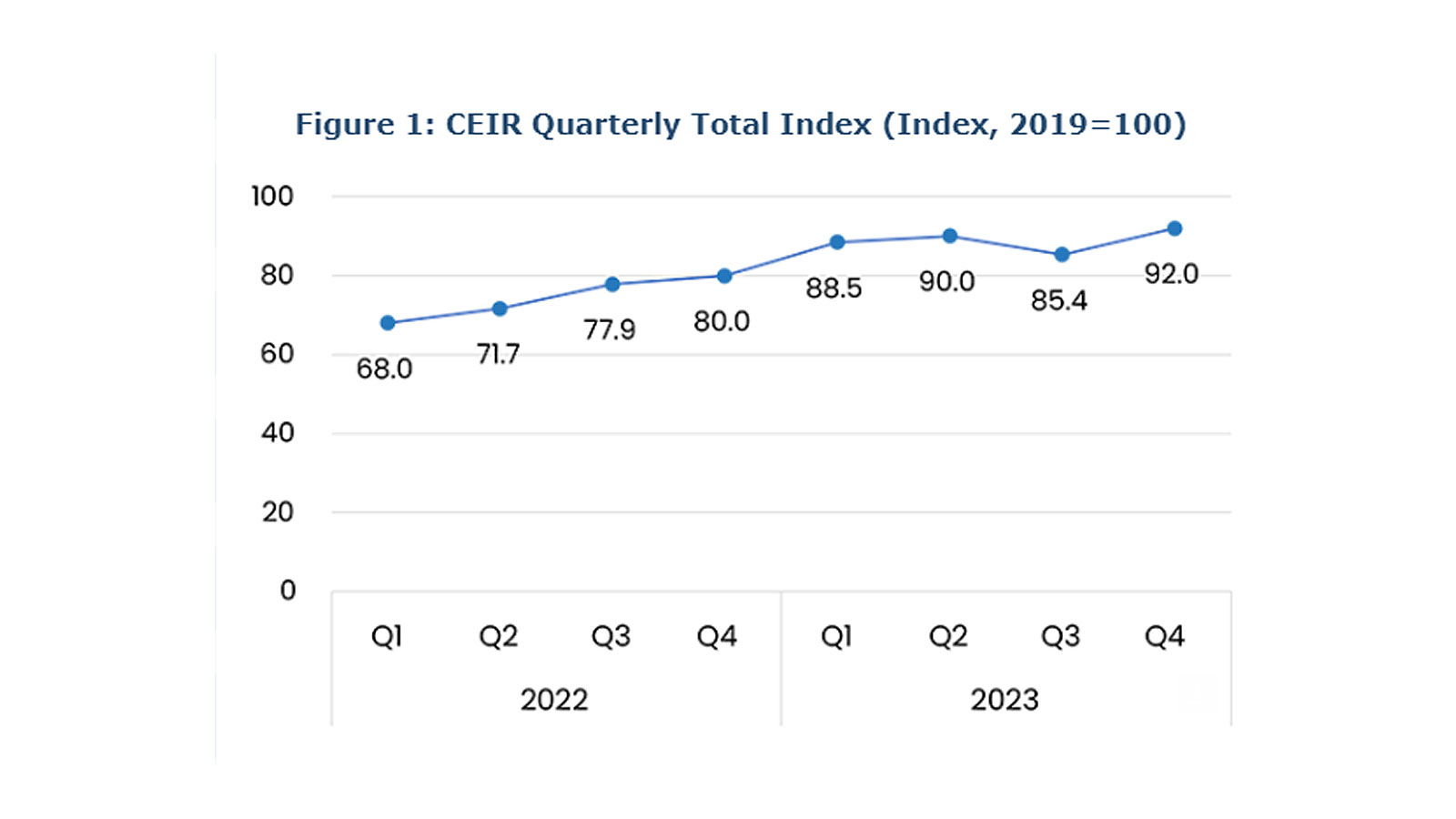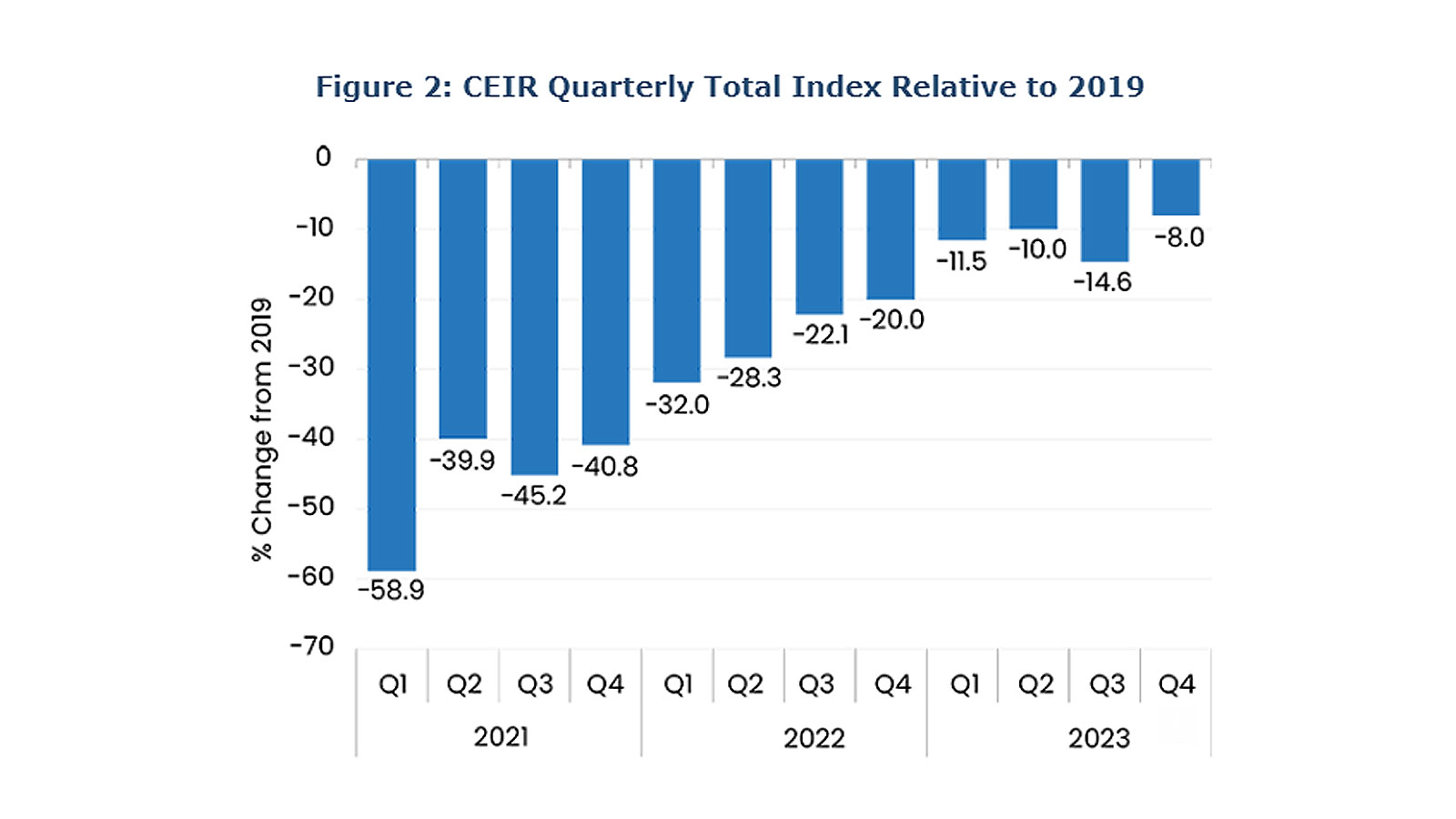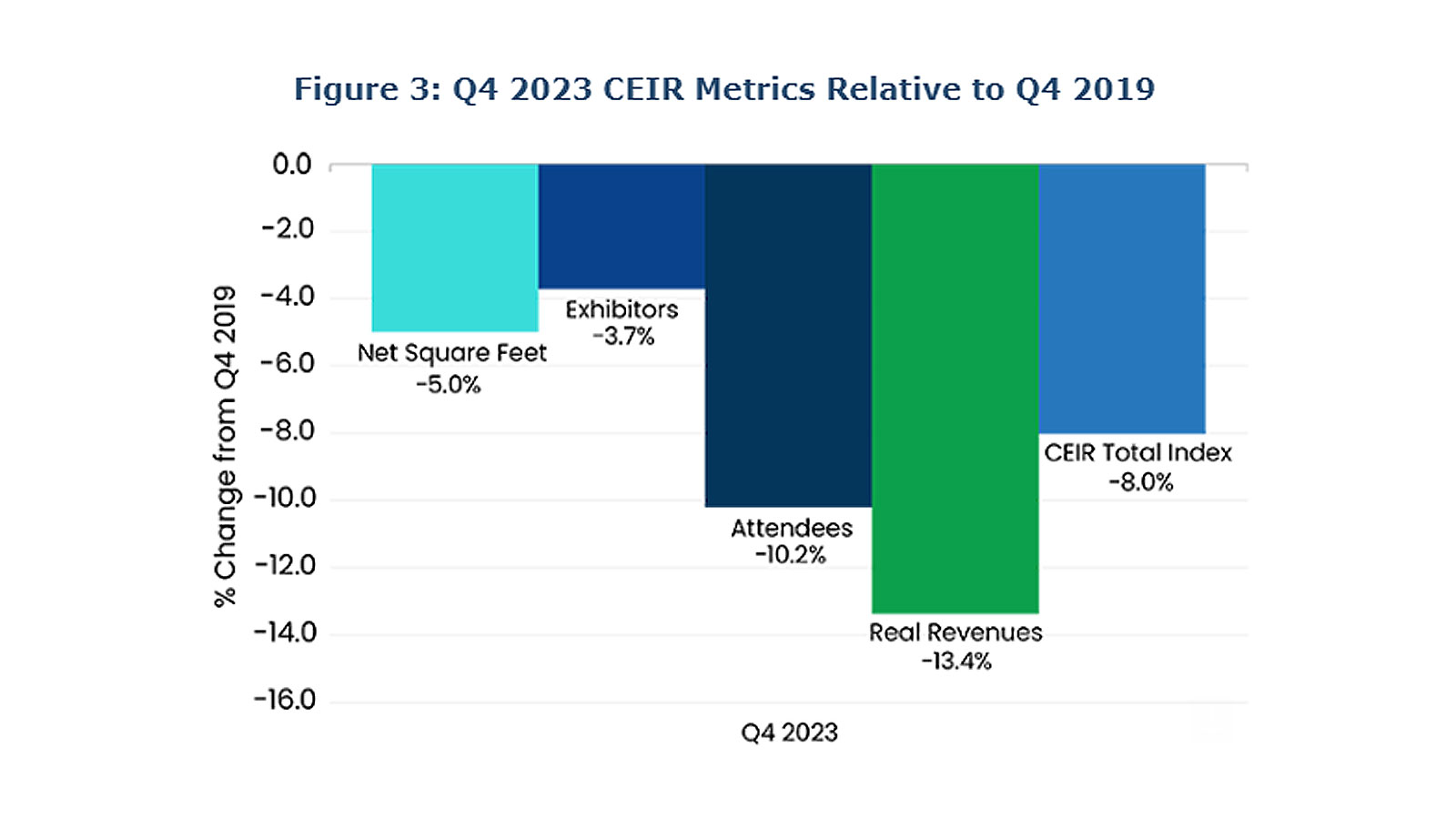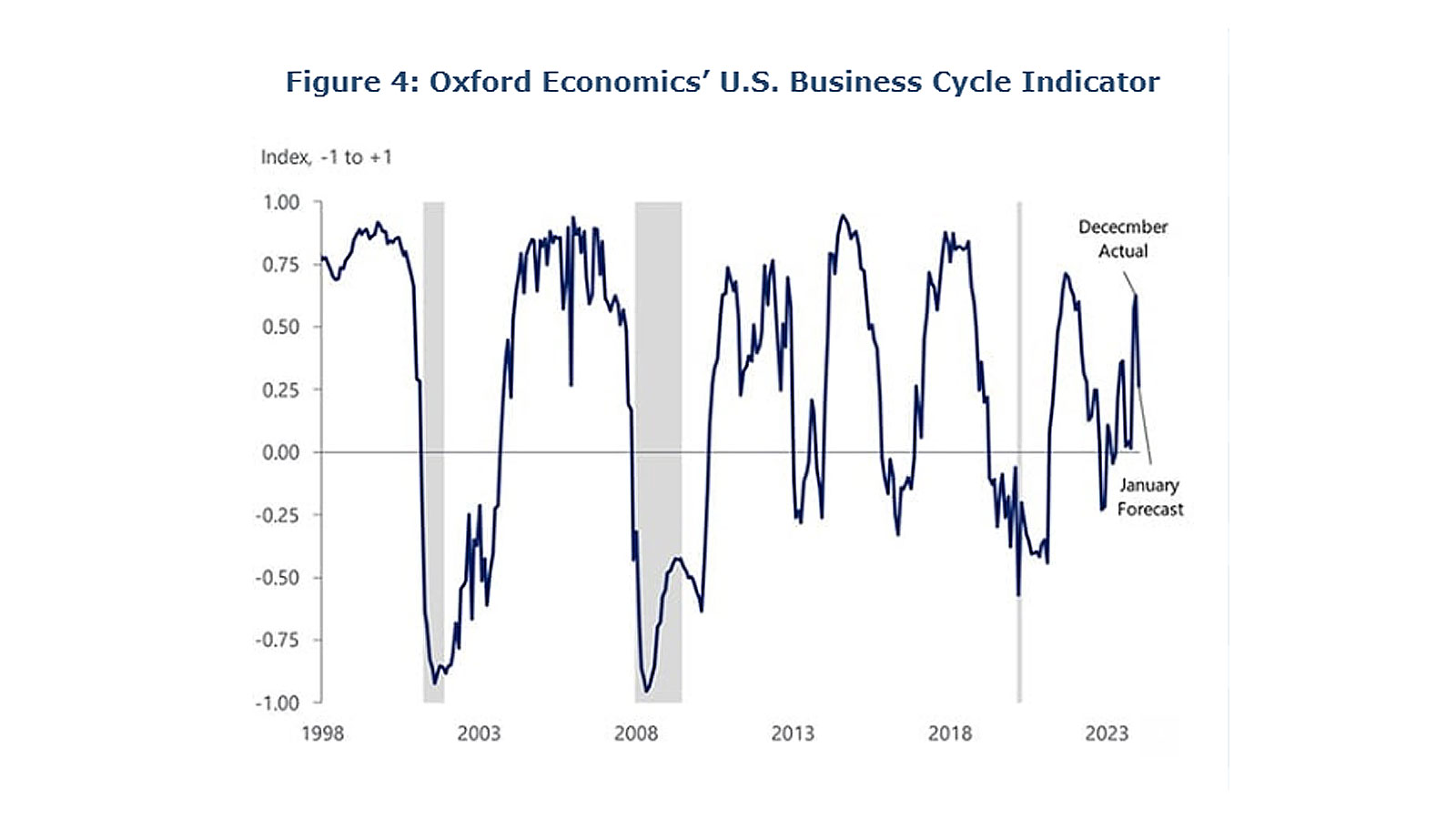Despite nominal revenue being 3.7% higher than 2019 levels, higher costs eroded the value of exhibition income in inflation-adjusted terms (i.e. adjusting nominal revenue for inflation showed that real revenues still trail 2019 by 13.4%).
DALLAS – The Center for Exhibition Industry Research (CEIR) announced that the U.S. business-to-business (B2B) exhibition industry continues to rebound, recording strong improvement in the fourth quarter of 2023. Extremely low cancellations and continued improvement in metrics outcomes for completed events boosted the Q4 2023 Index value to 92.0 (Figure 1). As expected, the CEIR Total Index – a measure of overall exhibition performance – continues to recover, surging 15.0% from a year ago.

CEIR has teamed up with Tourism Economics, an Oxford Economics Company, as its consulting partner for exhibition industry performance-related research, where Tourism Economics has taken on the role of tracking and analyzing U.S. business-to-business (B2B) exhibition performance.
“I am pleased with the smooth transition of Tourism Economics producing the CEIR Index,” stated CEIR CEO Cathy Breden, CMP-F, CAE, CEM. “The bench strength of the Tourism Economics team is evident, assuring the reliability of quarterly, historical benchmarks. The CEIR Index Report for 2023 will be published in late April, including a forecast outlook through 2026.”
Performance registered just 8.0% below the same period in 2019, marking a substantial gain compared to the past two years, which included a 41.0% shortfall in Q4 2021 and a 20.0% deficit in Q4 2022. As evidence of recent momentum, the Q4 CEIR Total Index gained 6.6 percentage points compared to Q3 2023.
Figure 2 illustrates exhibition industry performance for events occurring between Q1 2021 and Q4 2023, compared to the same quarter in 2019. The latest results for Q4 2023 show a rebound after a weaker third quarter. Among all events in the Index sample, 31.0% have surpassed their pre-pandemic levels of the CEIR Total Index. This represents a jump from Q4 2022 when only 23.0% of events held in that quarter surpassed 2019 results.

The cancellation rate for in-person events remained low at 1.4%, on par with the cancellation rate of 1.3% in Q4 2022, and a significant improvement from 14.8% in Q4 2021.
“The latest CEIR Index readings confirm the resilience of exhibitions,” said Adam Sacks, President of Tourism Economics. “The industry has full recovery in view with the Index just 8.0% below pre-pandemic levels, showing the enduring importance of exhibitions to company performance.”
Q4 2023 CEIR Metric Performance

Among the four components of the Total Index, the Exhibitors metric has recovered the most, at just 3.7% below Q4 2019; followed by Net Square Feet (NSF) with a decline of 5.0%. Attendees and Real Revenues have been slower to recover from Q4 2019, with declines of 10.2% and 13.4%, respectively. Despite nominal revenue being 3.7% higher than 2019 levels, higher costs eroded the value of exhibition income in inflation-adjusted terms (i.e. adjusting nominal revenue for inflation showed that real revenues still trail 2019 by 13.4%).
The U.S. Economic Outlook for 2024 Continues to Improve
A strong labor market, moderation in inflation, and the easing of financial market conditions have all played a role in fueling recent growth.
Oxford Economics’ business cycle indicator (BCI) is signaling that the economy continues to show resilience, as this index staged a robust recovery throughout Q4 and recorded its highest reading in two years in December 2023 (Figure 4). Gains in the BCI were broad-based in December. Strong gains in personal income continued to translate into higher levels of consumption. Better-than-expected industrial production in December also contributed positively to the BCI, thanks to mining’s resiliency and gains in motor vehicles and parts, as more automotive suppliers return to normal operation.

The outlook for the economy remains modestly positive because of the strength of the labor market, looser financial conditions, and healthy household and nonfinancial corporate balance sheets. Oxford Economics’ subjective odds of a recession remain low, at 30.0%. Key downside risks include significant weakness in the supply side of the economy, consumption weakness as households exhaust savings, and investment suffering more than anticipated from fiscal policy uncertainty. Additional downside risks include greater-than-anticipated shocks from geopolitical tensions and trouble in commercial real estate, primarily office space.
Vicky is the co-founder of TravelDailyNews Media Network where she is the Editor-in Chief. She is also responsible for the daily operation and the financial policy. She holds a Bachelor's degree in Tourism Business Administration from the Technical University of Athens and a Master in Business Administration (MBA) from the University of Wales.
She has many years of both academic and industrial experience within the travel industry. She has written/edited numerous articles in various tourism magazines.































































































































































































